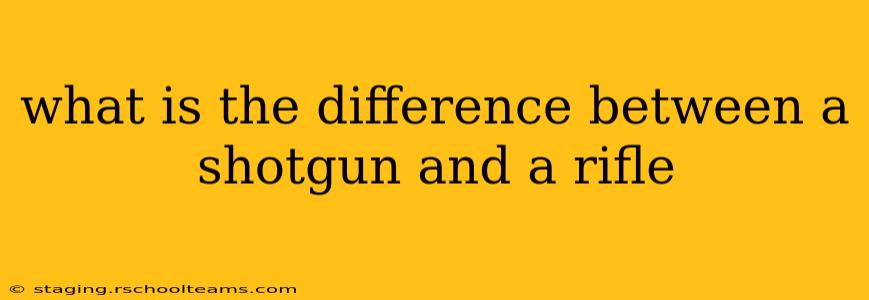Shotguns and rifles, both long guns used for hunting, sport shooting, and self-defense, are often confused. While they share some similarities—both are shoulder-fired firearms—significant differences exist in their design, function, and intended use. Understanding these differences is crucial for safe and responsible firearm handling and choosing the right tool for the job.
Key Differences Between Shotguns and Rifles:
The most fundamental difference lies in their projectile delivery system:
-
Shotguns: Fire multiple projectiles (shot) simultaneously from a single cartridge. This shot can range from small pellets (like birdshot) ideal for small game to larger pellets (buckshot) or slugs capable of taking down larger animals or offering self-defense capabilities. The spread of the shot is a key characteristic.
-
Rifles: Fire a single projectile (bullet) per shot. This bullet is typically a solid, elongated projectile designed for accuracy and long-range impact. Rifles use rifling—grooves inside the barrel—to spin the bullet, improving accuracy and range.
This core distinction leads to other important differences:
1. Ammunition:
-
Shotgun Ammunition: Comes in various gauges (e.g., 12 gauge, 20 gauge), referring to the diameter of the barrel. Each gauge uses different shell sizes and shot types.
-
Rifle Ammunition: Is categorized by caliber (e.g., .223, .308, .30-06), indicating the diameter of the bullet. Each caliber uses a specific cartridge size and bullet weight.
2. Barrel Design:
-
Shotgun Barrels: Typically have a smooth bore (no rifling), allowing the shot to spread. Some shotguns offer rifled barrels for slugs, enhancing accuracy.
-
Rifle Barrels: Always have rifling, imparting spin to the bullet for accuracy and distance. Different rifling patterns affect bullet stability and accuracy.
3. Range and Accuracy:
-
Shotguns: Generally have shorter effective ranges than rifles, especially with shot. Accuracy depends heavily on the shot type and the distance to the target. Slugs increase range and accuracy significantly.
-
Rifles: Are designed for longer ranges and higher accuracy due to the rifled barrel and the single, precisely-designed bullet.
4. Intended Use:
-
Shotguns: Frequently used for hunting smaller game (birds, rabbits), home defense (using buckshot or slugs), and clay pigeon shooting (using shot).
-
Rifles: Commonly used for hunting larger game (deer, elk), target shooting (at various distances), and long-range precision shooting. Some rifles are also used for self-defense, but shotguns are generally favored for home defense due to their immediate stopping power at close range.
5. Recoil:
Both shotguns and rifles produce recoil, but the nature of recoil varies. Shotgun recoil is often felt more as a sharp push, while rifle recoil can be a stronger, more linear force depending on the cartridge.
Choosing Between a Shotgun and a Rifle:
The best choice depends entirely on your intended purpose. Consider the following:
- What are you hunting? Small game? Large game?
- What is your shooting range? Close range? Long range?
- What is your skill level? Rifles generally require more precision and practice.
- What is your budget? Ammunition costs vary between shotguns and rifles.
Ultimately, both shotguns and rifles are valuable firearms with distinct advantages. Understanding these differences will help you make an informed decision based on your specific needs and preferences. Remember always to prioritize safe firearm handling practices and to adhere to all relevant laws and regulations.
